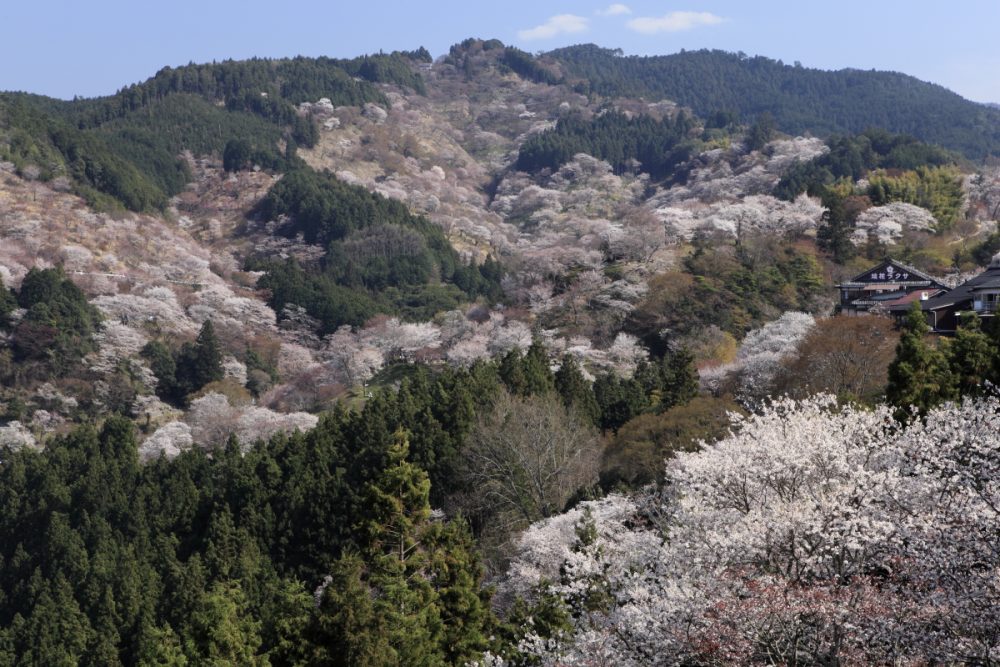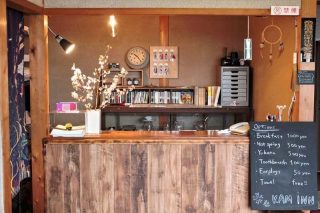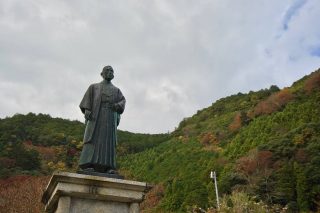Every spring in Yoshino, the hillsides take on spectacular shades of pink and white as thousands of cherry trees come into bloom. I had long read about Yoshino’s cherry blossoms in classical Japanese poetry, but when I visited Yoshino I experienced their splendor with my own eyes. These cherry trees create a magical, otherworldly landscape that has drawn emperors, aristocrats, samurai, and poets, along with ordinary Japanese, to this remote area for centuries. Cherry blossom viewing is best when accompanied by cups of sake and plenty of dango sweets made from rice flour.
But there’s a lot more to cherry trees than their loveliness. The ephemeral nature of the blossoms, which last only a week or so, is often portrayed in Japanese art and literature as a symbol of the transience of beauty and life itself. Ki no Tomonori (ca. 850–907), one of the compilers of the Kokinshu poetry anthology, composed this poem about Yoshino:
miyoshino no
yamabe ni sakeru
sakurabana
yuki ka to nomi zo
ayamatarekeru
Blossoming on the hills
Of noble Yoshino
Cherry flowers!
And I was convinced
That I was seeing snow
(trans. by Anthony H. Chambers; in The Secret Window: Ideal Worlds in Tanizaki’s Fiction, p. 73)
Another compiler of the anthology, Ki no Tsurayuki (872–945), seems to have tired of hearing of the splendor secondhand:
koenu ma wa
yoshino no yama no
sakurabana
hitosute ni nomi
kikiwataru kana
Until I go there
I must continue merely
to hear from others
word of the cherry blossoms
in the hills of Yoshino.
(trans. by Helen Craig McCullough with Tosa Nikki and Shinsen Waka; in Kokin Wakashū: The First Imperial Anthology of Japanese Poetry, p. 133)
Aside from being a source of artistic inspiration, cherry blossoms also have a spiritual significance. Many people who enjoy cherry blossom viewing may not realize that these flowers have a deep religious dimension that is inextricably tied to the origin of Yoshino and to a hermit who lived 1,300 years ago.
En no Gyoja or En the Ascetic (634–ca. 700) was a legendary mystic and sorcerer who is recognized as the founder of Shugendo, a highly syncretic belief system that combines mountain worship and folk beliefs with Shinto, Buddhism, and Esoteric Buddhism. According to tradition, En no Gyoja prayed for 1,000 days on Mt. Omine and was visited by the Buddha and the bodhisattvas Maitreya and Kannon. He pleaded with them to change their form into that of a terrifying deity to scare people onto the path of righteousness. They ascended into the heavens, which shook with lightning and fire. In their place descended a newly created deity: Zao Gongen, a manifestation of three Buddhist deities with origins in an amalgamation of Shinto gods. Its face bore a fierce expression but its body was blue, representing compassion. Moved by this sight, En no Gyoja carved Zao Gongen’s likeness out of cherrywood and made the kami the principle deity of Shugendo.
At Yoshino, En no Gyoja established the Kinpusenji Temple, the head temple of the Kinpusen Shugendo sect. Because En no Gyoja’s followers revered cherry trees for their role in the founding of Shugendo, they planted them throughout Yoshino. Later generations of believers continued this tradition of donating these sacred cherry trees, providing Yoshino with the most cherry trees in Japan. Cherry trees were, of course, prized for their beauty and were planted throughout Japan. Famous hybrids include Somei-Yoshino (Prunus x yedoensis), which was likely developed in Tokyo in the 19th century.
The central area of cherry trees in Yoshino spreads over some 60 hectares and is managed by the Yoshinoyama Sakura Aid organization, which protects them from disease, rot, and damage from the crowds of pilgrims and ordinary people enjoying cherry blossom viewing parties. The organization also actively manages cherry cultivation as a whole and recently finished planting 10 hectares of cherry trees in the Oku-senbon area. The roughly 30,000 cherry trees in Yoshino come in about 200 varieties including Kasumi zakura and the most commonly found, Shiroyama zakura (white mountain cherry). Illuminated at night, these can be seen in Yoshino’s Shimo-senbon, Naka-senbon, Kami-senbon, and Oku-senbon areas; revelers have long used the Japanese expression hitome senbon or “a thousand trees in one glance” to describe this extraordinary kaleidoscope of petals. For travelers to Japan, visiting Yoshino during cherry blossom season is definitely an unforgettable experience.




